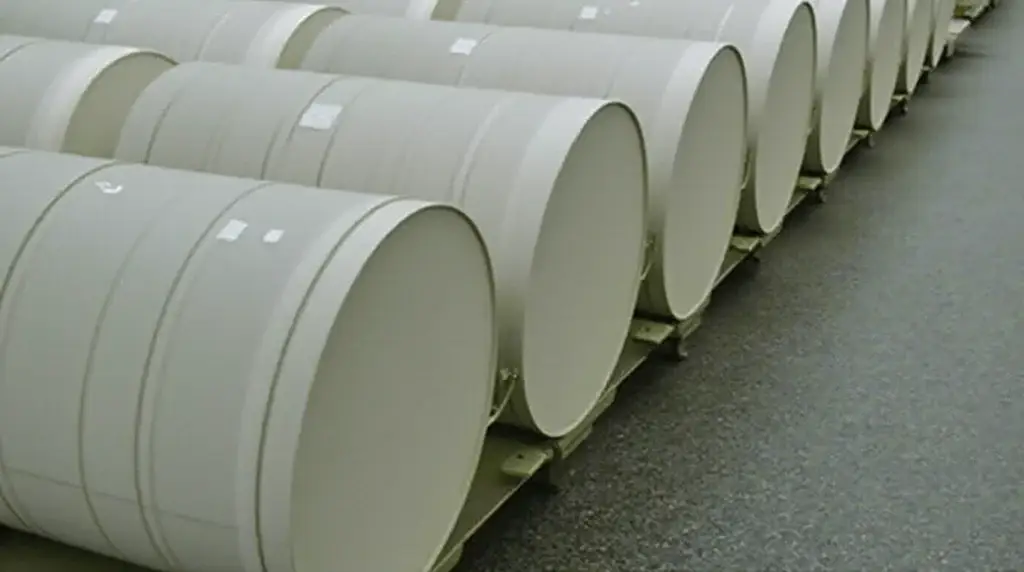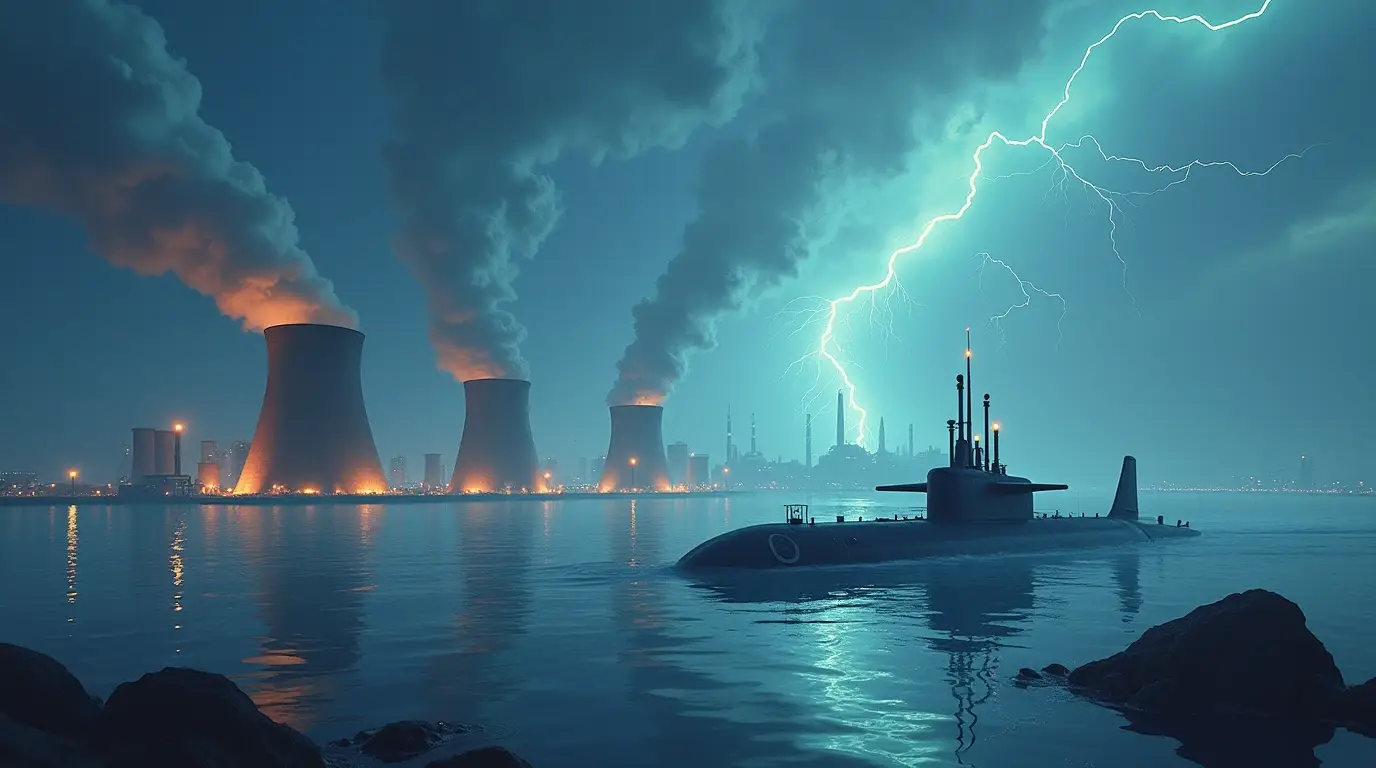Nuclear power is a type of energy that is produced through nuclear reactions, primarily by the process of nuclear fission. In fission, the nucleus of an atom, usually uranium or plutonium, splits into smaller nuclei and releases a great amount of energy in the form of heat. This heat is utilized to produce steam that drives turbines for generating electricity. Nuclear power plants work a lot like conventional fossil fuel power plants, but use nuclear reactions rather than combustion to generate energy.
The application of nuclear energy is not limited to the generation of electricity; it has a wide range of uses in many fields. Nuclear technology is used in medicine for imaging and treating disease, in agriculture for food irradiation and pest control, and in research for scientific inquiry. Military applications include nuclear-powered propulsion for submarines and aircraft carriers.
Nuclear energy has various advantages, among them low greenhouse gas emissions during operation and a high capacity factor relative to renewable sources, but it also has disadvantages regarding radioactive waste management, the risk of accidents, and nuclear proliferation.
Global Overview of Nuclear Power Utilization
Total Capacity and Operational Reactors
At the beginning of 2023, there were some 440 reactors operational in some 32 countries around the world, with a combined capacity of approximately 390 gigawatts (GW)1. These are crucially important contributors to low-carbon electricity.
Contribution to Electricity Generation
Nuclear power provides about 10% of the world’s electricity, while in some countries, it has attained greater importance. French gets about 70% of its electricity from nuclear energy, but in Ukraine, Slovakia, and Hungary, nearly half of the produced electricity is covered by nuclear plants.
Regional Utilization
United States: The U.S. is the biggest atomic power producer on the planet, with over 50% of its clean electricity emanating from atomic sources. It has commissioned 96 reactors to date and has now shifted focus to Small Modular Reactors to meet future needs.
Canada: Similar to the U.S., Canada is moving ahead with its program, focusing on SMRs to improve the security of energy supply by reducing reliance on fossil fuels.
France: France leads Europe in nuclear energy production and plans to expand its capacity by building new reactors. The country views nuclear power as essential for reducing carbon emissions and achieving energy independence
Germany: In contrast, Germany has opted for a nuclear phase-out, closing its last reactors by April 2023. However, the energy crisis following Russia’s invasion of Ukraine has led to renewed discussions about extending the life of existing plants
Eastern Europe: Countries like Poland are investing heavily in nuclear energy to phase out coal and enhance energy security. Poland plans to construct six large pressurized water reactors by 2040
China: China is rapidly expanding its nuclear capabilities, with plans to add around five reactors annually as part of its strategy to reduce coal dependency and meet growing energy demands . The country aims to build up to 150 new reactors by 2035
India: India is also increasing its nuclear capacity as part of its strategy to meet rising energy needs while minimizing environmental impact. The country is focusing on indigenous reactor designs
Japan: Following the Fukushima disaster, Japan has gradually restarted its reactors. The government aims to return nuclear power’s share in the energy mix to pre-crisis levels, which was over a quarter of total electricity generation
United Arab Emirates (UAE): The UAE has established a significant nuclear program as part of its efforts to diversify its energy sources and enhance security. This initiative reflects a broader trend among Gulf states seeking sustainable energy solutions.
Japan: Following the Fukushima disaster, Japan has gradually restarted its reactors. The government aims to return nuclear power’s share in the energy mix to pre-crisis levels, which was over a quarter of total electricity generation
How nuclear power is utilized in these different fields
Energy Production
Electricity Generation:
Nuclear power contributes a fair share to the world’s electricity supply at about 10% of the total. Countries like France, with 70%; Ukraine, with 55%; and Belgium, with 50.8%, derive most of their energy supplies from nuclear. New reactor constructions are set in countries like China, India, and the UAE in order to increase the capacity.
Small Modular Reactors:
These are new-generation SMRs and micro-reactors under development that promise flexible, scalable nuclear solutions for a multitude of applications, including EV charging stations, without overloading the grid.
Military Applications
Nuclear Weapons: Some countries manufacture nuclear weapons to act as a deterrent. Among the countries possessing these bombs in large numbers are the United States, Russia, and China.
Naval Propulsion:
Nuclear reactors power submarines and aircraft carriers, enabling them to operate many months without refueling. In total, over 160 ships are powered by more than 200 small nuclear reactors, mostly submarines but also icebreakers and aircraft carriers.
Agriculture
Food Irradiation:
The technology of irradiation in the preservation of food products is one means by which pests and pathogens could be eliminated from food products with extended shelf lives. The US and Russia employ this method for improving food safety.
Soil Management:
Isotopic techniques help understand nutrient cycles and optimize fertilizer use in agriculture.
Construction
Nuclear Infrastructure:
Building nuclear power plants is a big engineering task. Finland and Poland are building new reactors to add to their energy infrastructure.
Material Testing: Assuring the integrity of structures such as bridges and buildings by non-destructive testing using nuclear methods.
Digital Technologies
Nuclear Data Management:
Advanced computing techniques manage data from nuclear reactors, enhancing safety and operational efficiency. Established nuclear programs invest in digital technologies for monitoring reactor performance.
Research and Development:
The facilities that create research into new technologies also exploit nuclear technology in developing the areas of medical diagnostics and treatment.
Transportation
Electric Vehicles:
Nuclear power contributes indirectly to transportation by generating electricity for EVs. It is cleaner compared to fossil fuels since the use of nuclear-generated electricity reduces greenhouse gas emissions 3. Besides, SMRs can be combined with EV charging stations to provide effective on-site energy supply.
Nuclear Hydrogen Production: Hydrogen obtained by electrolysis of water with nuclear energy provides an exceptionally clean fuel for especially adapted vehicles.
Nuclear-Powered Ships:
Nuclear propulsion is suitable for sea vessels in maritime transport that require long periods at sea without refueling. This technology is increasingly considered due to constraints on fossil fuel use.
The Future of Nuclear Waste Management: Challenges and Opportunities
Nuclear power is becoming more and more recognized as a feasible alternative for reaching net-zero emissions as the globe struggles with the pressing need to switch to sustainable energy sources. The handling of nuclear waste, however, is a major difficulty that comes with this change. Policymakers, business executives, and members of the public must all comprehend the ramifications of nuclear waste and how it will influence the future of energy generation.

Reactor spent fuel and byproducts from the manufacture of nuclear weapons make up the majority of nuclear waste. This waste is extremely radioactive and can continue to be dangerous for tens of thousands of years, endangering both the environment and human health. To reduce these concerns, this waste must be stored and disposed of properly over an extended period of time.
Current Disposal Methods
- Geological Disposal Facilities (GDFs): Many countries are planning to use GDFs—engineered structures built deep underground (typically around 700 to 1,000 meters)—to isolate radioactive materials from the environment for extended periods. Finland’s facility is often cited as a pioneering model, demonstrating advanced engineering solutions. However, concerns about the longevity and effectiveness of such storage solutions remain prevalent.
- Temporary Storage: Currently, much of the nuclear waste is stored at inactive nuclear power plants. This temporary measure does not address the long-term hazards associated with the waste. In Chernobyl, for instance, significant amounts of radioactive materials remain dangerously stored within the reactors themselves, highlighting the risks associated with inadequate long-term planning.
- Transmutation: An emerging concept in nuclear waste management involves transmuting long-lived isotopes into shorter-lived ones through neutron bombardment. This process could reduce the volume and toxicity of nuclear waste over time, but it does not eliminate the need for ultimate disposal solutions.
Increased Nuclear Power Generation
The amount of waste produced will increase dramatically as nations like France, China, and India develop their nuclear capabilities to meet growing energy demands and climate goals. Global wasted fuel emissions are predicted to rise to 11,000–13,000 tons per year by 2030. Strong management techniques are required to guarantee sustainability and safety in light of this increase in waste generation.
Economic Considerations
Managing nuclear waste has a significant financial cost. Both taxpayers and energy users incur higher costs when permanent disposal sites are not established on time. For instance, because of legislative shortcomings in waste disposal, the United States spends about $360 million a year on onsite storage. Resolving these financial issues will be essential to preserving public support for nuclear energy as more countries make investments in nuclear infrastructure.
Environmental Risks
Concerns over the safety of present storage techniques are raised by the possibility of catastrophic accidents akin to those at Fukushima or Chernobyl. Ecosystems and human populations may suffer greatly if these materials are not managed. As nuclear power continues to play a part in global energy policies, it is imperative that strong safety standards are in place to mitigate these dangers.
The creation of effective policies in regard to nuclear waste management will continue to shape the road of energy policy in a world now dependent on clean energy. Determining our will toward safeguarding future generations and our planet in this regard rests at the fulcrum of the road ahead. The road is tough, but we can ensure better usage of nuclear energy by means of responsible waste management-solely if proactive with necessary measures and innovative thinking.

